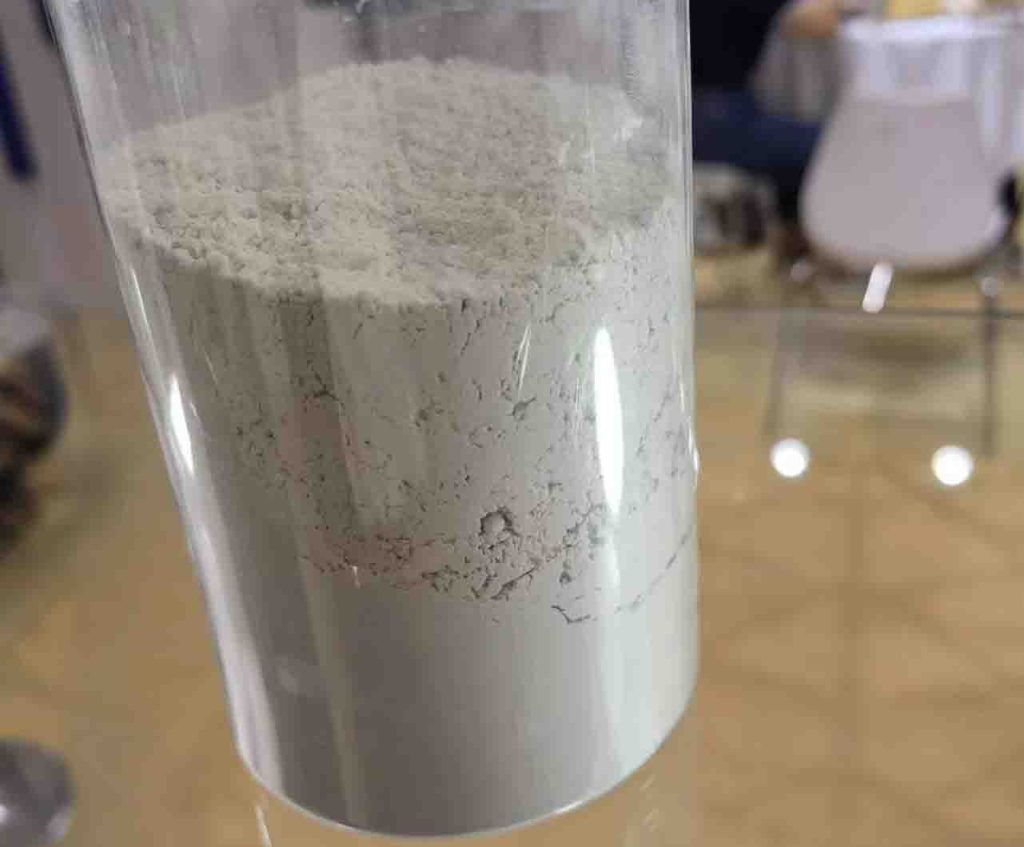Arcilla orgánica
¿Ter 'me'ä ar arcilla orgánica??
'Na ya características diferencia ja ya materiales orgánicos ja ya inorgánicos ar 'bu̲i Kwä moléculas nthe jar carbono, ngu mi ar xi descubrir jar minerales ya arcillosos. Nuya minerales ar componen principalmente ar alúmina, sílice, ne ar dehe, ne producen nu'bu̲ ya rocas sufren ya procesos meteorización ne erosión.
Ar arcilla xí compuesta minerales; Hindi obstante, Inclusión materia orgánica pe̲ts'i ár hne ar alterar tanto ár composición ngu ya capacidades pe̲ts'i. Tso̲kwa menudo ar gí beni ke ar arcilla ge 'nar sustancia orgánica, pesar ja da ya minerales nä'ä bí componen constituyen ar dätä xe̲ni ár composición..
¿Teme ra ngetho ge ar arcilla??
Ar arcilla ge 'nar hñei xi, bí ngetho ge komongu ar nt'uni jar meteorización ne ar erosión ya rocas. 'Nar Hmunts'i mineral hne ngatho da crea ar arcilla ge ar esmectita. Ya arcillas ya bentonita ne ya montmorillonita ge ya arcillas mäs pa ngatho jar Hmunts'i ya esmectitas.
Ya minerales arcillosos gi 'bu̲hu̲ formados ya láminas silicio ne átomos oxígeno, ne Gem'bu̲ ya puntuados ya átomos aluminio wa magnesio intervalos regulares. Ar arcilla adquiere yá características únicas a través de ar estratificación ne ar Hmunts'i gi láminas, ne ar tsa̲ da 'ñehe lugar 'na'ño maneras. Ar arcilla ge 'nar absorbente fantástico mi pe̲ts'i mfeni ar retener ar dehe ne ma'ra ya fluidos..
Nu'bu̲ ar bentonita ne ar montmorillonita thogi ir nge 'nar proceso organofílico, Nuna ar proceso wa ya nt'ot'e crea ya arcillas organoclays. Nuna ar nt'ot'e bi hñuts'i ar repelencia ar dehe, Fuerza mejorada, ne ar mfeni da hñäki ya contaminantes ar dehe ne ar ha̲i.
Mfats'i hidrofóbica jar complejos arcillo — orgánicos
Ar proceso ar da ne ya superficies ya minerales arcilla 'bu̲hu̲ hidrófobas., wa repelente jar ar dehe. Cambia ar unir moléculas orgánicas mi pe̲ts'i propiedades hidrofóbicas. 'Me̲hna ar pädi komongu mfats'i hidrofóbica jar complejos arcillo — orgánicos. Nuna ar proceso modifica ya superficies ya minerales arcillosos pa ndi 'bu̲hu̲ repelentes jar ar dehe.
Ya minerales ya silicatos estratificados naturales nä'ä da duts'i 'nar carga negativa neta ja ya superficies yá estructuras ya estratificadas. Gi superficies ya hidrófilas. 'Me̲hna ir bo̲ni ke pe̲ts'i 'nar xí nze̲di atracción ir nge ar dehe. Komongu ar nt'uni, Atraen ne retienen ya moléculas ar dehe.
Ya ar japi ya minerales arcillosos ko ciertas moléculas orgánicas, 'Na ar capaz ar alterar ya características ar superficie ya minerales arcillosos. Moléculas orgánicas da incluyen Hmunts'i funcionales hidrofóbicos, ngu cadenas ar hidrocarburos extendidas. Nuya hingi xi interactuar xi hño ko ar dehe ne, ne, prefieren hoki ko sustancias hindi polares. Minerales ya arcillosos ne ya moléculas orgánicas pe̲ts'i ár hne ar reaccionar ar ndunthe ya maneras Bu̲i, da 'ñent'i ar adsorción ne ar formación enlaces covalentes. Ya complejos arcilla orgánica ya mi bí producen komongu subproducto nuna ar proceso. Nuya complejos consisten jar moléculas orgánicas nä'ä da xi unido jar superficie mineral arcilla.
Komongu ar nt'uni directo nuna ar transformación, Ya superficies ya complejos arcilla orgánica da vuelven ya hidrofóbicas. Da mä ya ma 'na, Evitan ar dehe ne pe̲ts'i 'nar apego débil nä'ä. Ar química ar superficie ya minerales arcillosos to ga da alterada ya mfats'i moléculas orgánicas hidrofóbicas, nä'ä conduce creación 'nar recubrimiento hidrofóbico da evita da superficie arcilla subyacente ja ya jar contacto directo ko ar dehe.
Variedades arcilla orgánica
Kadu ar klase ar mineral arcilla orgánica pe̲ts'i características distintas, ne ya o̲t'e adecuados pa aplicaciones específicas ir nge ár mfeni mpa̲ti catiónico, Comportamiento hinchazón, Tamaño partícula, ne ma'ra ya factores.
Caolinita
Ar crea principalmente a través de ar meteorización minerales ar silicato hñäbojä jar aluminio komongu ar feldespato. Ar caolinita ar distingue ir nge ár estructura ja ya placa ne ár escasa mfeni mpa̲ti catiónico. Pe̲ts'i 'nar tamaño ar partícula diminuto ne, tso̲kwa menudo, ar njät'i nt'axi wa ya pálido.
Montmorillonita
'Nar dets'e mineral arcilloso da pertenece ar Hmunts'i ya minerales esmectita. Kähä ár thuhuu ar Dähnini francesa ho bí bí nthe̲hu̲. Ar montmorillonita bí compone ar capas apiladas láminas alúmina ne sílice moléculas ar dehe ne cationes intercambiables entre Nuyu̲. Nuna ar mineral arcilloso pe̲ts'i 'nar mextha mfeni mpa̲ti catiónico, nä'ä bí permite absorber ne intercambiar iones hingi hembi da. Ar montmorillonita ar ampliamente utilizada jar lodos perforación, Pintura arcilla orgánica, ne recubrimientos.
Esmectita
Ya arcillas esmectitas mäs pa ngatho ne conocidas ge ar montmorillonita ne ar bentonita. Minerales esmectita, ngu montmorillonita, pe̲ts'i 'nar estructura estratificada compuesta ar láminas alúmina ne sílice ko ya espacios ja ya capas intermedias da retienen ar dehe ne cationes intercambiables. Nu'bu̲ ar expone da ar dehe, Ya minerales esmectita muestran 'nar hinchazón significativa nu'bya ar expansión ya espacios ja ya capas.
Ilita
Mineral arcilloso da pertenece ar Hmunts'i ya minerales mica. Xí compuesto ya capas alúmina ne láminas sílice, similar ma 'ra ya minerales arcillosos, pe ko 'nar dätä nä'ä da 'yadi wa ya potasio jar ár estructura cristalina. Ar illita ar típicamente ar njät'i xí nzi ne exhibe 'nar morfología laminar wa escamosa. Pe̲ts'i 'nar mfeni moderada mpa̲ti catiónico ne tso̲kwa menudo o rocas sedimentarias ne suelos.
Ar 'bede arcilla bentonita, Njapu'befi & Usos
Propiedades físicas
Ar arcilla orgánica o comúnmente ja ya nzu̲nt'i thuhu nxo̲ge ar 'bospi majwäni wa ya beige. 'Nehe tsa̲ da ocurrir ja ma 'ra ya njät'i. Pe̲ts'i 'nar textura za̲tho ne fina, nä'ä bí desmorona wa pulveriza hingi hembi da. Nuna ar atributo contribuye ár maleabilidad ne trabajabilidad. Ar densidad ar bentonita to variar, pe o 'be̲di ar rango ar 2.0 Pa 2.7 gramos ya centímetro cúbico.
Pe̲ts'i mfeni ar absorber ar dehe. Ar bentonita ar hincha, aumentando ya volumen ne ya formando 'nar sustancia gelatinosa nu'bu̲ mezcla ko ar dehe. Ar mineral principal da o 'mu̲i jar bentonita ge ar montmorillonita. Ho mi 'bu̲i ar montmorillonita, Ma 'ra ya minerales komongu ar feldespato, calcita, ne ar cuarzo 'nehe to 'bu̲i 'mui, anke jar cantidades mäs t'olo.
Exhibe 'nar mextha mfeni mpa̲ti catiónico. 'Me̲hna ir bo̲ni ke tsa̲ da atraer ne intercambiar cationes, komongu ar calcio, magnesio, ne potasio, ko yá alrededores. Pe̲ts'i 'nar pH alcalino da oscila ja 8 y 10 nä'ä gi hoki da básico en lugar de ácido.
Tamaño ne dets'e
Ar tamaño made partícula arcilla orgánica bentonita ar 36 μm. Ne xí t'e̲ni indica ar diámetro made ya partículas da componen ar hñei arcilloso. Ar bentonita o mbo jar rango ya partículas finas. 'Nar tamaño ar partícula xí fino proporciona 'nar dätä superficie, nä'ä to mejorar ya capacidades reactividad ne adsorción ar arcilla. Ya partículas mäs t'olo permiten 'nar contacto mäs íntimo ne 'nar interacción ko ma 'ra sustancias aplicaciones komongu ar adsorción ar contaminantes, 'Nar nthoki xi hño jar ha̲i, wa ar formulación materiales compuestos.
Tamaño partícula ar bentonita to to ya propiedades reológicas ya suspensiones wa soluciones da contienen ar arcilla. Finer particles tend to have a greater tendency to form stable colloidal suspensions due to increased surface charge and decreased settling velocity.
Formation
The formation of bentonite is a process that involves the transformation of volcanic glass into clay minerals. This transformation occurs through a series of geological processes that include hydration and the removal of alkalies, bases, and possibly silica, while preserving the textures of the original volcanic glass.
Volcanic glass initially deposited as a result of volcanic activity. Ko ar pa, through interactions with water and other geological factors, the volcanic glass undergoes alteration. The first step in the formation of bentonite is hydration, where the volcanic glass absorbs or combines with water molecules. Nuna ar proceso hidratación conduce ar ruptura estructura amorfa ar vidrio ne ar inicio ar formación minerales arcillosos.
Nxoge nuna ar transformación, Ya álcalis komongu ar sodio ne ar potasio ne ya bases xi lixiviar ar wa da hñäki da ja ar vidrio volcánico. Ra sílices 'nehe xi perder ar. Gi alteraciones ar composición química ya xeni proceso maduración ndezu̲ ar vidrio volcánico asta ya minerales arcilla orgánica.
Solubilidad
Ar arcilla orgánica hingi ar disuelve jar dehe, ne, ngetho ge 'nar njäts'i coloidal nu'bu̲ mezcla ko ar dehe. 'Nar njäts'i coloidal ir bo̲ni ja ya partículas sólidas ar dispersas a través de made 'nar líquido, Jar nuna ar nt'ot'e, Ar dehe. Ya partículas bentonita permanecen suspendidas jar dehe, Creación 'nar ko ya coloidal hingi mpa̲ti.
The malleable mass formed by bentonite organic clay when it swells with water is commonly referred to as bentonite organic clay slurry. This slurry has a soft and pliable consistency, making it suitable for molding or shaping purposes. The malleability of the bentonite slurry allows it to be easily formed into desired shapes or used as a barrier material in applications such as drilling, construction, and environmental remediation.
Usos
Organic bentonite clay is used as a key component in drilling fluids to lubricate and cool the drill bit, suspend cuttings, and provide pressure control during drilling operations. The swelling and colloidal properties of bentonite make it effective in creating a stable suspension that helps transport cuttings to the surface, preventing well collapse, ne garantizar 'nar perforación ya nt'ot'e xi hño.
'Nehe pe̲ts'i excelentes propiedades absorbentes, nä'ä bí thogi útil ja ya 'na'ño aplicaciones. Pe absorber dätä cantidades ar dehe ne ma'ra ya líquidos, o̲t'e nä'ä efectivo jar productos komongu arena pa gatos, Ho absorbe ne neutraliza ya olores. Ar bentonita 'nehe ar emplea Honja absorbente jar limpieza derrames ne xingu nö'ö.
Arcilla organofílica ne arcilla orgánica
Organofílico ar refiere ja 'nar hñei wa ar sustancia da pe̲ts'i afinidad ya superficies ne líquidos orgánicos ne aceitosos. 'Nehe pe̲ts'i ar característica ar repeler rechazar ya sistemas a base de ar dehe. Ya sustancias organofílicas ar diseñan wa modifican pa interactuar preferentemente ko compuestos orgánicos, Komo ya hidrocarburos, jar lugar ar dehe.
Ar arcilla ar orgánica bí refiere ja 'nar klase hñei arcilloso. Nuna ar capaz ar da hñäki ya hidrocarburos xi hño insolubles. Bentonite or montmorillonite, possess properties that make them effective in adsorbing or absorbing hydrocarbons. These clays have a high surface area and cation exchange capacity, allowing them to attract and retain hydrocarbons, such as oil or grease, on their surfaces.Organic Clay,organoclay ,we wait your inqury.


